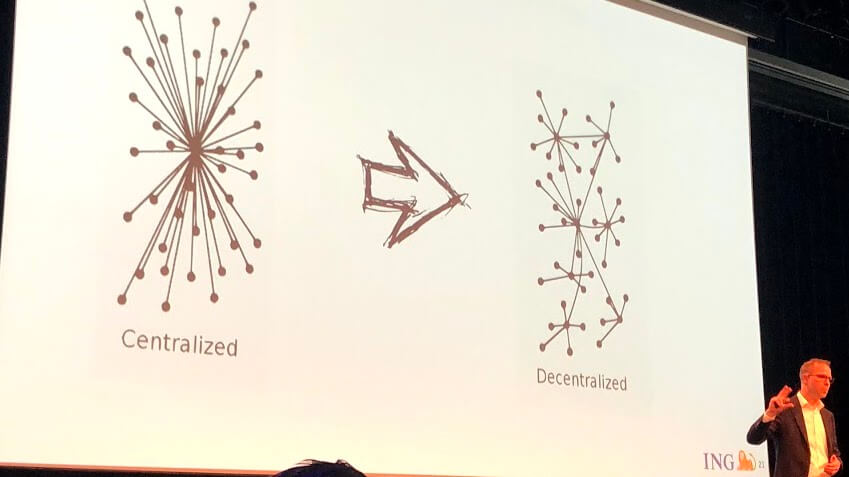1. Know why people (don’t) buy your products!
Karl Gilis was announced onto the main stage as fireworks from Belgium, as medicine for the lunch dip. Karl didn’t disappoint. Claiming most businesses don’t know their customer, they don’t know why people actually buy their product, only socio-demographic B*llsh*t. BANG!
How can you persuade visitors to buy your product if you don’t know why people buy it?
Instead of summing up product specifications or bragging about your company, you should talk about actual customer benefits.
3 ways to find out:
- Ask existing customers; What would you miss most when our product would be taken away?
- Ask why customers bought your product from you, right after they did it.
- Ask why people didn’t buy your product. (Exit Enquete / Unconverted leads)
Another great tip: don’t only optimize your website based on learnings from user research but also change your Meta descriptions and Ad copy! Think about the full user journey.
2. Automate analysis of your A/B tests.
Tom van den Berg talked about the importance of test quantity: doing many tests. Or as he called it: “Gas op die Lollie!”. An efficient CRO process will increase the # of tests you can run, which will increase the ROI.
Every time an A/B test has run, you have to check the conversion, significance & impact on important segments and other goals. That’s a lot of manual work and should be automated!
What to include in the automated report:
- General Test Result: Users, Conversions, CR and significance.
- Sample Rate Mismatch checks: is there a segment over- or underrepresented in the test, possibly skewing the result.
- Test Results most important segments: Desktop, Mobile, New- & Returning Users.
- Overall evaluation Criteria: formula with the weighted average of all goals.
3. Use your A/B tests as insight for personalization.
Instead of declaring just 1 general winner of an A/B test: A or B is the winner.
Look at whether there are segments for which the winner differentiates from the general winner.
So if in general, B is the winner, find out if there is a segment where A is actually the winner.
A and B might both be winners, but for different people.
Check if it makes sense (based on statistical best practices), to retest for that segment, or even immediately personalize.
4. Start User testing for €0!
CRO means being Data-driven. But don’t forget there are real people behind all those numbers!
You have to be Human-centric as well. We know how many ‘users’ drop out of the funnel, but why?
Usability testing is definitely a good idea but can be expensive and you haven’t proven the impact of this yet…
Stefan Van Ballegooie didn’t let the lack of budget stop him. He talked about how he started user testing at Allianz himself with €0.
Usability test for €0?
- Product: Current website / App
- Interviewer: Yourself
- Users: Ask Employees not involved with the product (development) to be your user.
- Tools: Your own laptop, Screen recorder and Video conferencing tool (letting more colleagues follow the user test and record face of the user via webcam)
Gradually climbing the User test maturity ladder…
- Product: Have prototypes – wireframes of new websites/ideas made
- Users: Recruitment of actual users in the target group (e.g.: respondenten.nl)
- Tools: Video record user interactions (E.g.: Mr. Tappy – $349)
5. Democratize the ability to Experiment.
We all know by now the job of a CRO team is about more than optimizing conversion rates or just running tests. It’s about creating a culture of validation & experimentation. Knowing whether the things you do, actually impact the business goals in a positive way and by how much. Outcome over Output in the whole organisation.
Kevin Anderson explains that ING is on the journey of going from 1 CRO hero to continuous experimentation by everybody.
The first step in the democratization of experimentation was to make testing as easy as possible and bringing it to more employees. They did this by making their own tool, integrated into their CMS & analytics. Taking out the need for technical skills to run A/B tests.
They’re not worried about test quality yet. The main focus is on culture change and velocity first.
An inspiring story and initial results look very promising.





